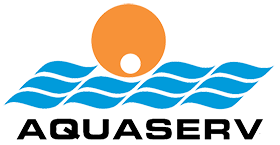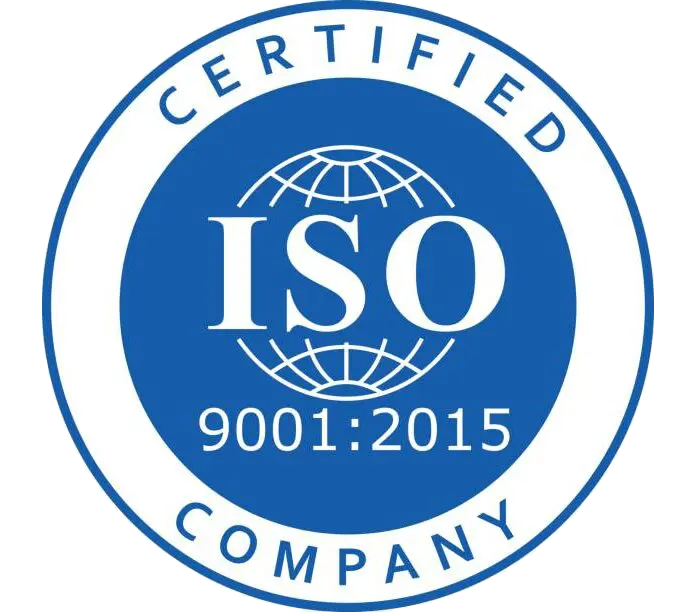In the World of Quats
By: Mike Mayer, CTO
03/12/2025
Quaternary ammonium compounds (quats), have been widely used throughout various industries, since the first aliphatic quat molecule was synthesized back in 1935.1 Whether as standalone products, in built formulations or in combination with other additives, quats have found wide use applications as cationic surfactants, corrosion inhibitors and/or as EPA registered antimicrobial products.
Throughout the years advancements and evolutions of the quat molecule (i.e. “generations”) have been made to improve their tolerances to anionic materials, organic loads, and hard water ions as well as increased biocidal activity. There are 7 quats classified based on their toxicity and enhancements. The first five generations of quats are the most widely used in the industry (see Generations of Quats below).
The 6th and 7th generations of quats are polymeric quaternary ammonium compounds (QACs) and/or a blend of polymeric QACs and Bisquats, respectively.
Quats are cationic membrane-active agents which interact with and disrupt the cytoplasmic membrane of bacteria and plasma membrane of yeast which leads to cell leakage, damage, and eventually cell death. In addition, quats also interact with and inactivate energy-producing enzymes as well as denature essential cell proteins within the microbial cells (see Figure 1.)
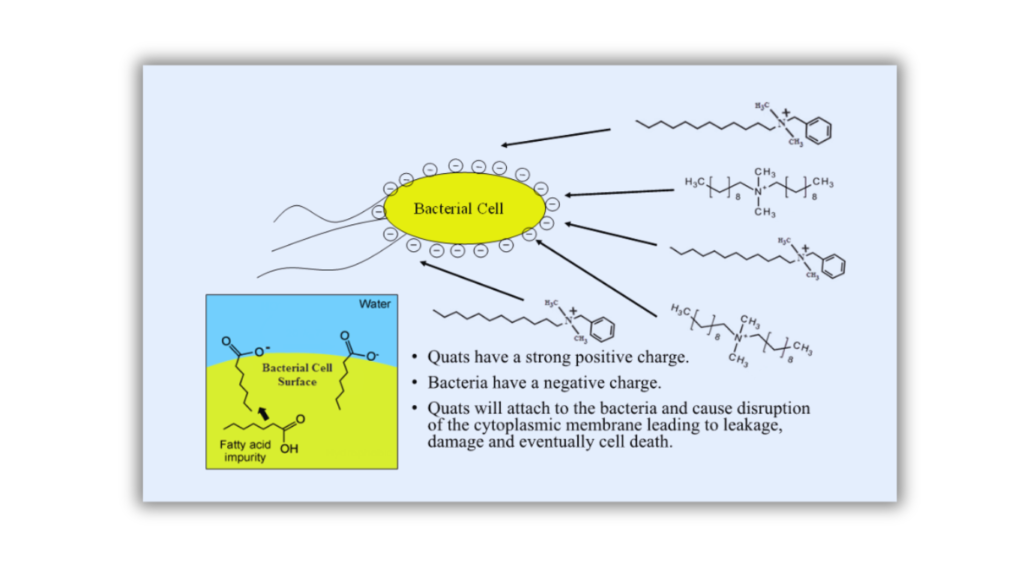
Efficacy of Quats
What quat users really need to know.
With regards to efficacy of quats, the third generation of quats, a combination of ADBAC and ADEBC quats, referred to as “Dual Quats,” offers increased biocidal activity over ADBAC quats (i.e., first generation quats). The fourth generation of quats, DDAC, referred to as “Dual or Twin Chain Quats” are recognized as the most efficacious defined by outstanding germicidal performance and improved tolerance for anionic surfactants, friction reducers, organic loads and hard water ions. This increase in efficacy is due in part to its structure, having two alkyl chains that destabilize the phospholipid cell membrane more efficiently than ADBAC, which allows better cell penetration and disruption of cell metabolism and causes higher cell membrane permeability. The efficacy of DDAC is relatively higher than ADBAC against bacterial, mold, and algae which can lead to reduced feed rates compared to ADBAC quats. The fifth generation of quats, a combination of ADBAC and DDAC, referred to as “Four Chain Quats,” offers an increase in efficacy (i.e., a synergistic effect) compared to sum of the parts: ADBAC and DDAC (see Table 1.)

To further illustrate the difference in biocidal efficacy between ADBAC and DDAC, an EN1276 test was performed against four strains of bacteria (P. aeruginosa, E. coli, S. aureus and E. hirae) at 20°C with a contact time of 5 minutes in the presence of bovine albumin solution (0.3 g/L for Clean vs. 3.0 g/L for Dirty). The results indicate that the biocidal efficacy of DDAC is far superior to ADBAC in the presence of the different concentrations of bovine albumin solution used in the study (see Figure 2.)
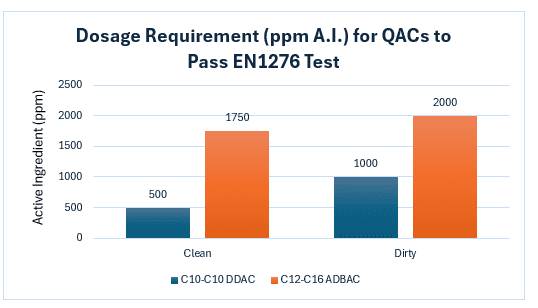
Generations of Quats
The generations of quat are based on technical advancements for the development of improved performance: increase tolerances to anionic surfactants, organic loads, and hard water ions and improved biocidal performance.
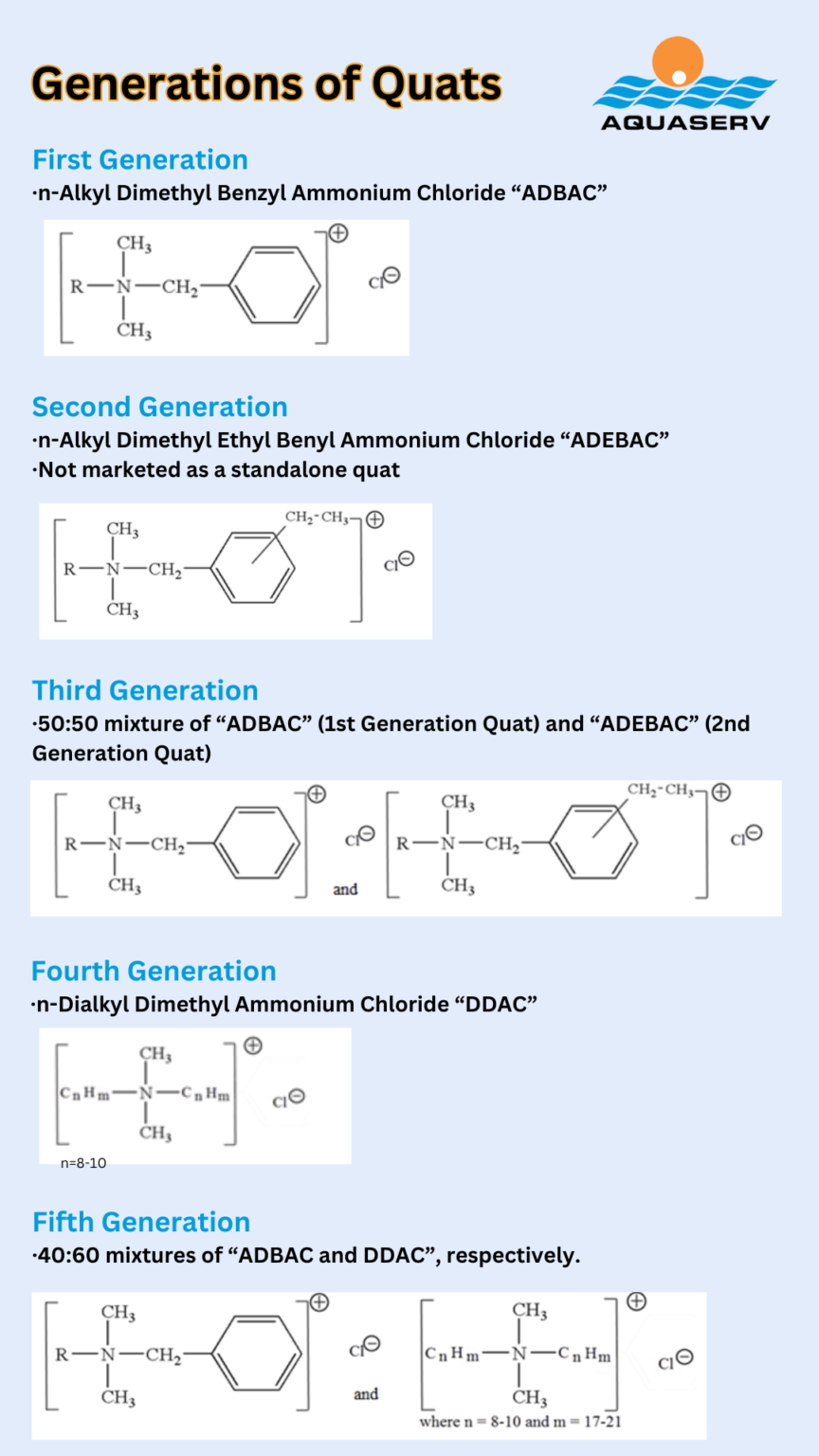
Product Benefits
- Broad Spectrum Activity
- Fast-Acting Antimicrobial Agents
- Easily disperses in water systems
- Compatible with chlorine
- Completely miscible with water
- Optimizing and Controlling Total Cost of Operations
- Preserving and Maintaining Quality of Water-Based Fluids
- Maintaining Hydrocarbon Quality
- Preventing Biofouling / Biomass Accumulation that Negatively Impacts Flow
- Preventing Biogenic Sulfide Production
- Protecting Assets from Microbiologically Influenced Corrosion
Aquaserv – Oil & Gas Product Portfolio
Bronopol
- B-800b (99.9%)
- B-810b (10%)
- B-830b (30%)
Dazomet
- B-458 (24%)
DBNPA
- B-225b (5.49%)
- B-22b (20%)
Glutaraldehyde
- Aqucar GA 15 (15%)
- Aqucar GA 25 (25%)
- Aqucar GA 30LT*
- Aqucar GA 45 (45%)
- Aqucar GA 50 (50%)
Glut / Quat Blends
ADBAC/DDAC Based
- B-802 (8% Glut / 2% Quat)
- B-1203 (12.0% Glut / 3% Quat)
- B-1203WM* ((12.0% Glut / 3% Quat)
- B-2512 (25.7% Glut / 12.5% Quat)
- B-2512WA*
ADBAC Based
- B-510 (5% Glut / 10% Quat)
- B-1015 (10% Glut / 15% Quat)
- B-12525E (12,5% Glut / 2.5% Quat)
- B-12525E WA* (12,5% Glut / 2.5% Quat)
- B-2512E (25.7% Glut / 12.5% Quat)
- B-2512E WA* (25.7% Glut / 12.5% Quat)
- B-4010 (40% Glut / 10% Quat)
- B-4010A* (40% Glut / 10% Quat)
Quats
ADBAC Based
- B-12S-50 (50%)
- B-425-50M* (50%)
DDAC Based
- B-445-10 (10%)
- B-445-30 (30%)
- B-445-50 (50%)
- B-445-50M* (50%)
THPS
- B-650 (50%)
- B-675A (75%)
*Winterized products:
WA – (Winterized with Acetone)
M – (Winterized with Methanol)
WM – (Winterized with Methanol)
LT – Low Temperature (Winterized with Acetone)
